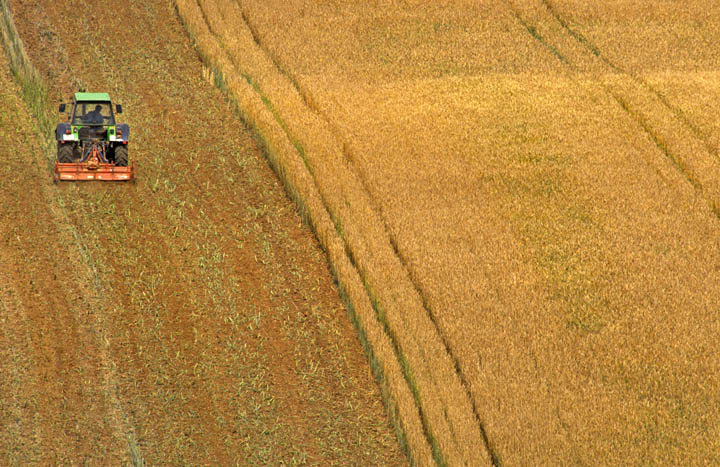
The surge in wheat prices this year will lead to increased global wheat production area in 2011, according to the International Grains Council (IGC).With wheat prices climbing nearly 20 percent from a year ago, the IGC expects total wheat production area to increase by four percent, from 216 million hectares (MH) (534 million acres) in 2010 to 224 MH (554 million acres) in 2011. With the exception of Russia, the IGC anticipates increased winter wheat plantings for all major exporters.
December 3, 2010

The surge in wheat prices this year will lead to increased global wheat production area in 2011, according to the International Grains Council (IGC).
With wheat prices climbing nearly 20 percent from a year ago, the IGC expects total wheat production area to increase by four percent, from 216 million hectares (MH) (534 million acres) in 2010 to 224 MH (554 million acres) in 2011. With the exception of Russia, the IGC anticipates increased winter wheat plantings for all major exporters.
Russia will continue to feel the effects of this year's drought moving into 2011. The drought caused a late start to the planting season, and winter wheat plantings will be down this year as a result. The IGC estimates Russian winter wheat seeding will fall to 11.5 MH (28 million acres), approximately 14 percent below last year's planted area. The reduction in winter wheat sowing could lead to further export restrictions if spring sowing does not increase. Earlier this month, the Russian Grain Union stated that spring grain sowings would have to increase by at least 2.5 MH (6 million acres) to ensure domestic supplies are adequate in the upcoming year.
"Even though spring wheat prices in Russia are high, it is likely that some potential spring wheat production area will be lost to sunflower," said Valentina Shustova, USW Moscow Office Director and Marketing Specialist. "Sunflower is the most profitable crop for Russian producers this year."
Don Schieber, a wheat producer from Ponca City, OK, and current USW Chairman, learned of another concern about spring wheat from a Russian official on a recent visit.
"I asked him if spring wheat could make up for some of the lost production area for winter wheat," Schieber said. "His answer was simple: 'Not enough seed.'"
IGC currently forecasts all-wheat production area in Canada to reach 9.5 MH (24 million acres), a 17-percent increase from 2010, but still two percent below the five-year average. Acreage dedicated to spring wheat, which accounts for more than 75 percent of Canadian production, has steadily declined over the past 20 years. Agri-Food Canada's latest Market Outlook Report stated that spring wheat production area has fallen by 41 percent since 1990, replaced by other crops, especially canola. Last year, Canada sowed 6.6 MH (16 million acres) of spring wheat, eight percent below the five-year average, while planting a record 6.8 MH (17 million acres) of canola.
With European Union (EU) ending stocks falling to their lowest level since 1983/84 (10.7 MMT or 393 million bushels), the IGC forecasts EU wheat plantings to be up this year in order to rebuild stocks. The IGC projects a one percent increase in total wheat production area, to 26.2 MH (65 million acres). Additionally, IGC expects a four percent increase in common wheat area for the EU's largest wheat producer, France, due to favorable planting conditions.
U.S. winter wheat plantings will increase this year, rebounding from the 97-year low planted last year. IGC currently pegs U.S. winter wheat seeding at 17.8 MH (44 million acres), an 18-percent increase from last year and three percent greater than the five-year average. Justin Gilpin, of the Kansas Wheat Commission, expects Kansas seeded area to reach 9.5 million acres (3.8 MH), a 10 percent increase from last year. However, Gilpin warns that abandoned acres might increase if conditions do not improve. The U.S. Department of Agriculture (USDA) currently rates winter wheat conditions at 47 percent good to excellent, down from 64 percent last year.
With increased plantings and 2010/11 carryover stocks projected at 23.1 MMT (849 million bushels), 43 percent above the five-year average, the U.S. remains well positioned to fulfill import demand and compensate for any possible shortfalls in the 2011/12 crop year.
You May Also Like



